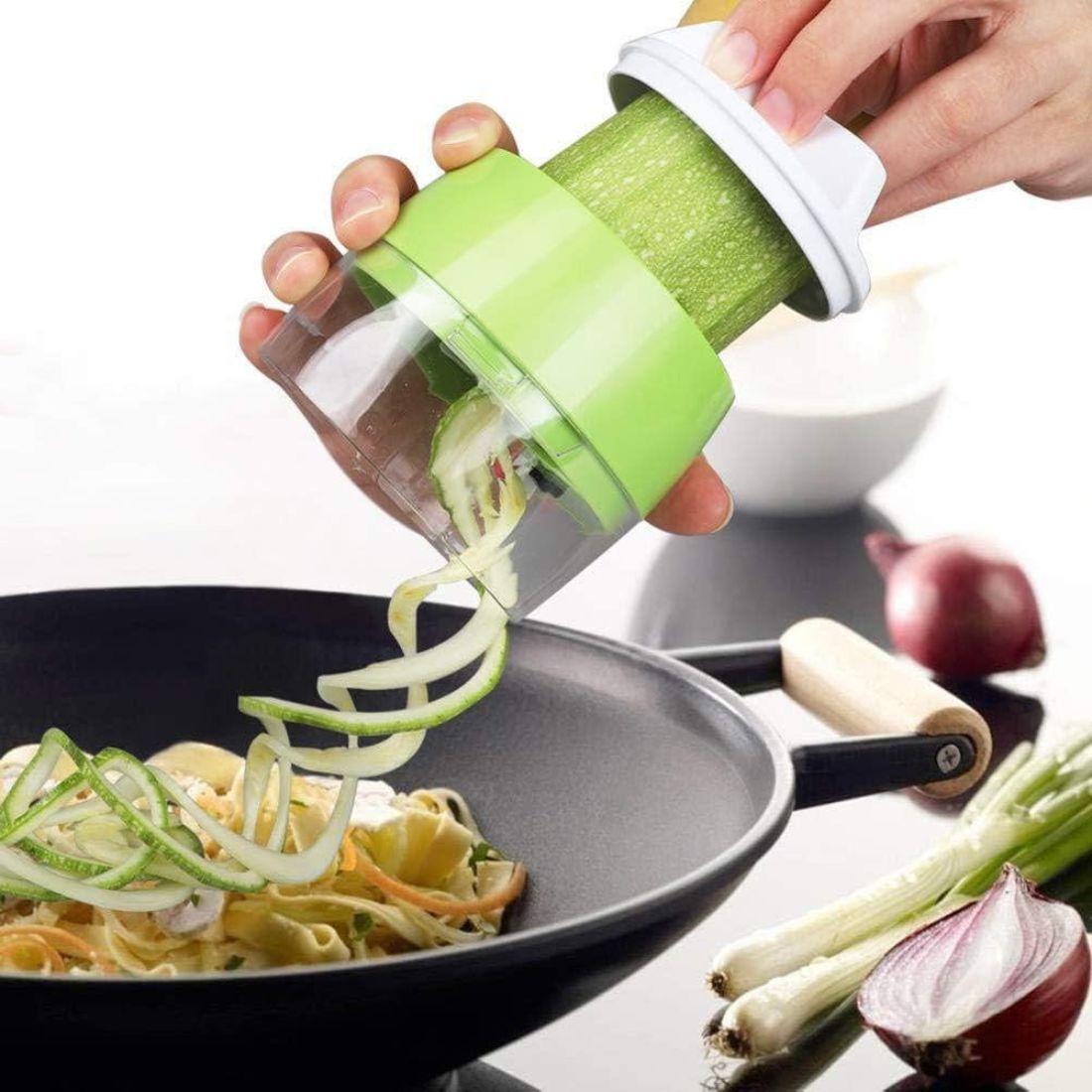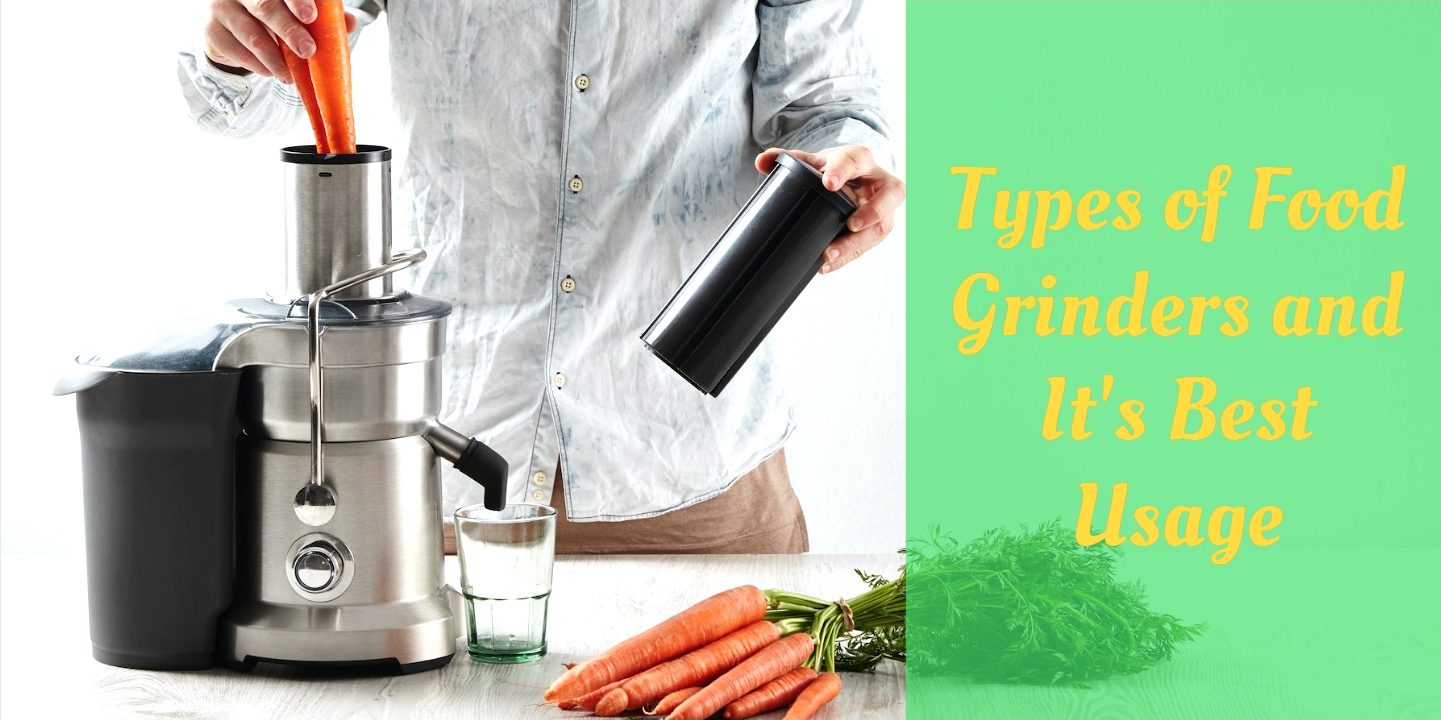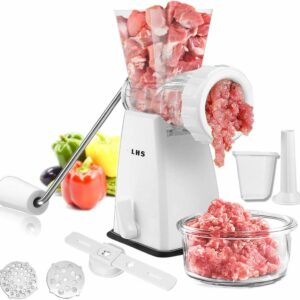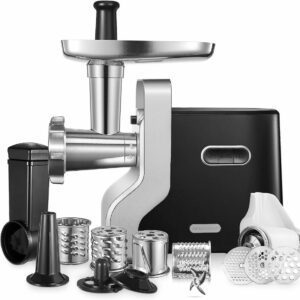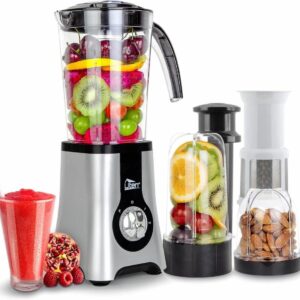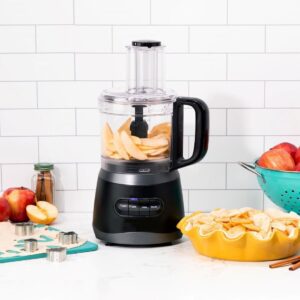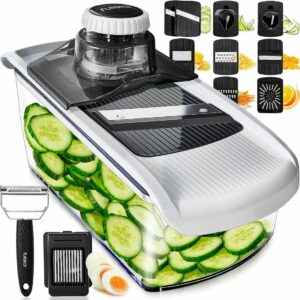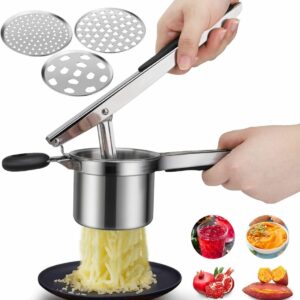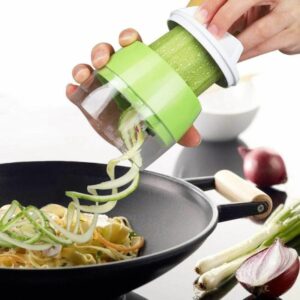Seeking tools that enhance your cooking experience? In this realm, food grinders stand as indispensable allies, transforming whole ingredients into finely ground textures that add diversity and depth to your culinary creations.
That’s why we’ve rounded up the 7 types of food grinders and their best usage for you. From humble manual grinders to powerful electric food choppers, each type possesses unique strengths and capabilities.
Our guide delves into the diverse world of food grinders, exploring distinct types and their optimal applications. Prepare to elevate your culinary creations to new heights. Let’s get into it!
Manual Vegetable or Meat Grinders
Those a classic kitchen tools that have been around for centuries. They are simple to operate and require no electricity, making them a great option for budget-conscious cooks or those who want to avoid using electricity in their kitchen.
Generally, these are composed of a handle, a hopper, a grinding plate, and a cutting blade. The user inserts the food into the hopper, cranks the handle, and the food is forced through the grinding plate and cutting blade, producing a finely ground product.
They are best suited for grinding small batches of soft veggies, such as carrots, zucchini, and bell peppers. They can also grind small batches of meat, such as ground beef, turkey, or pork sausage.
Pros:
- Economical
- No electricity required
- Portable
- Can grind small batches of soft vegetables and meat
Cons:
- Requires physical exertion
- Can be time-consuming for large batches
- Not suitable for grinding hard vegetables or tough meats
Best Usage:
- Grinding small batches of soft vegetables and meat
- Making homemade pasta dough
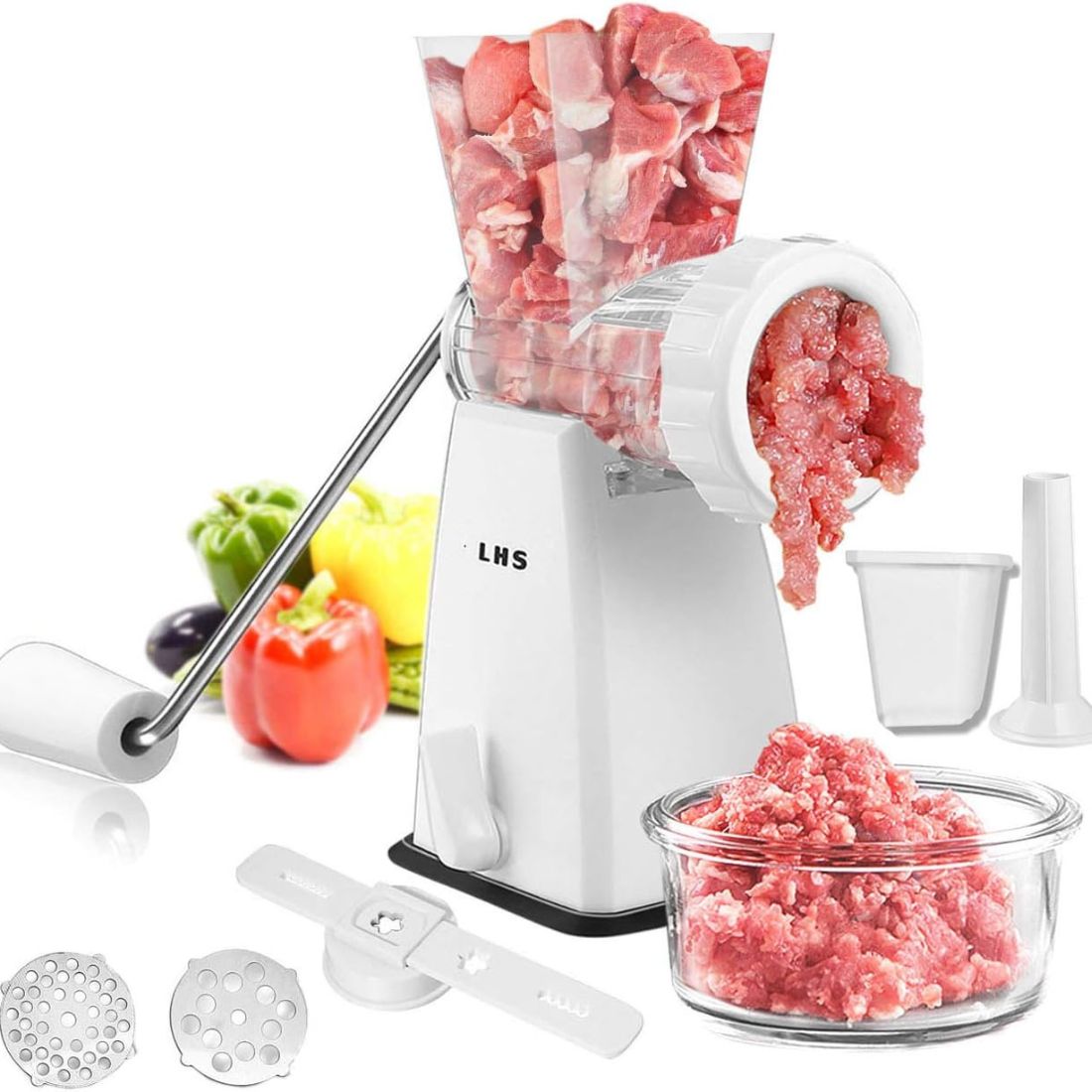
You may also like: 7 Best Vegetable Choppers (Dishwasher Safe List)
Electric Vegetable or Meat Grinders
So these are a modern upgrade to manual grinders. They eliminate the need for physical exertion and can grind food much faster. Plus, these are more versatile, as they can grind a wider variety of ingredients, including hard veggies, such as potatoes and onions, and tougher meats, such as chicken and fish.
Similarly, these are powered by an electric motor that spins a blade and grinding vessel. The user inserts the food into the hopper, and the motor does the rest.
Electric grinders are best suited for grinding big batches of food. Grinding hard veggies and tough meats is another use of these tools. They are also a useful for prepping sausages and other meat products.
Pros:
- No physical exertion
- Can grind large batches of food
- Can grind hard vegetables and tough meats
- Suitable for preparing sausages and other meat products
Cons:
- Can be expensive
- Requires electricity
Best Usage:
- Grinding large batches of food
- Grinding hard vegetables and tough meats
- Preparing sausages and other meat products
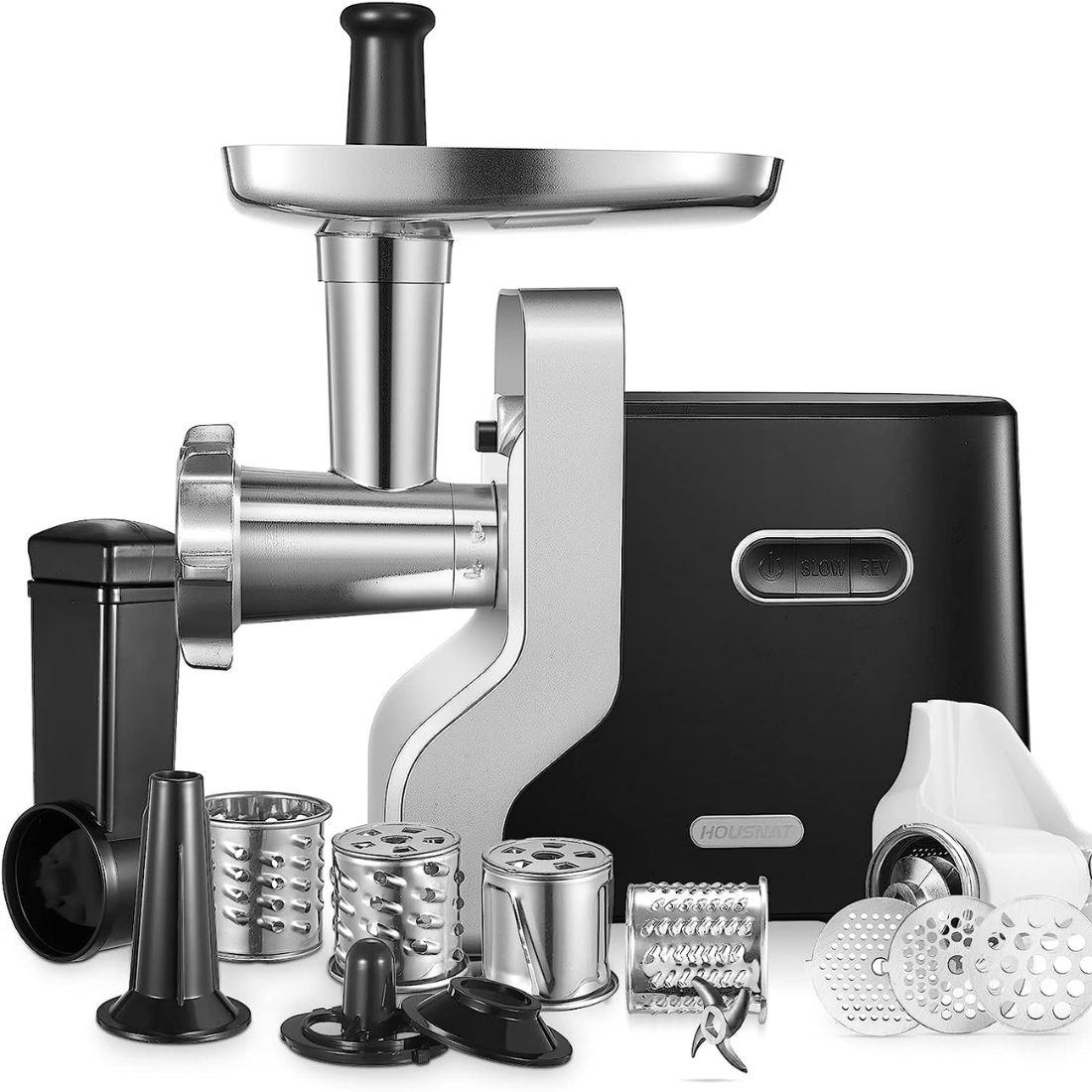
Blenders
As you know, there are versatile kitchen tools that can be used for a variety of tasks, including grinding food. Their powerful blades can pulverize food into a smooth, even consistency, making them ideal for creating smoothies, sauces, and dips. Also, it’s a good option for grinding softer fruits and vegetables, such as bananas, avocados, and carrots.
Also, these have a container, a blade assembly, and a base. The user places the food into the container, closes the lid, and turns on the blender. Accordingly, the blades chop and pulverize the food, producing a smooth mixture.
Blenders are best suited for grinding soft fruits and veggies. They can also be used to create smoothies, sauces, and dips. They are also a good option for making pureed soups and baby food.
Pros:
- Versatile
- Can pulverize food into a smooth, even consistency
- Suitable for grinding soft fruits and vegetables
- Ideal for creating smoothies, sauces, and dips
- Can make pureed soups and baby food
Cons:
- Can be noisy
- Not suitable for grinding hard vegetables or tough meats
Best Usage:
- Grinding soft fruits and veggies
- Creating smoothies, sauces, and dips
- Making pureed soups and baby food
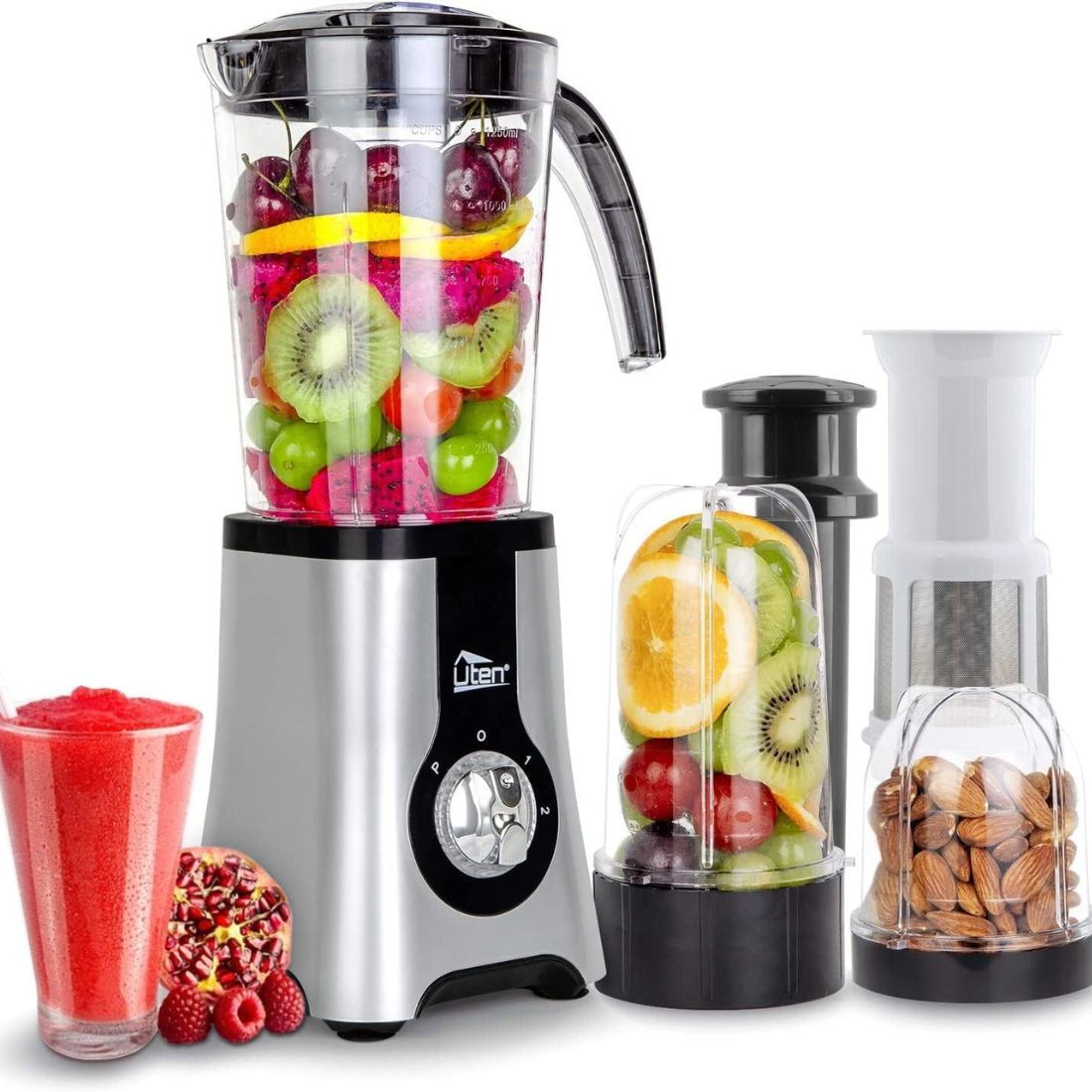
Check also: 9 Best Food Processors Reviews
Food Processors
Food processors are culinary workhorses that can handle a wide range of tasks, including grinding food. Their versatile blades can chop, slice, blend, mix, and puree, making them an indispensable tool for both novice and experienced cooks.
Chiefly, these consist of a bowl, a blade assembly, and a base. The user places the food into the bowl, closes the lid, and selects the desired blade or setting. The blades chop, slice, blend, mix, or puree the food as directed.
These are best suited for cutting a variety of stuff, including soft and hard veggies and meat. They can also be used for salads, stir-fries, and other dishes. They can also be used to blend soups, sauces, and dips. Making dough for pasta, bread, and other baked goods.
Pros:
- Extremely versatile
- Can chop, slice, blend, mix, and puree
- Suitable for grinding a variety of ingredients
- Can chop vegetables and fruits for salads, stir-fries, and other dishes
- Can blend soups, sauces, and dips
- Make dough for pasta, bread, and other baked goods
Cons:
- Can be expensive
- Can be bulky
Best Usage:
- Grinding a variety of ingredients
- Chopping vegetables and fruits for salads, stir-fries, and other dishes
- Blending soups, sauces, and dips
- Making dough for pasta, bread, and other baked goods
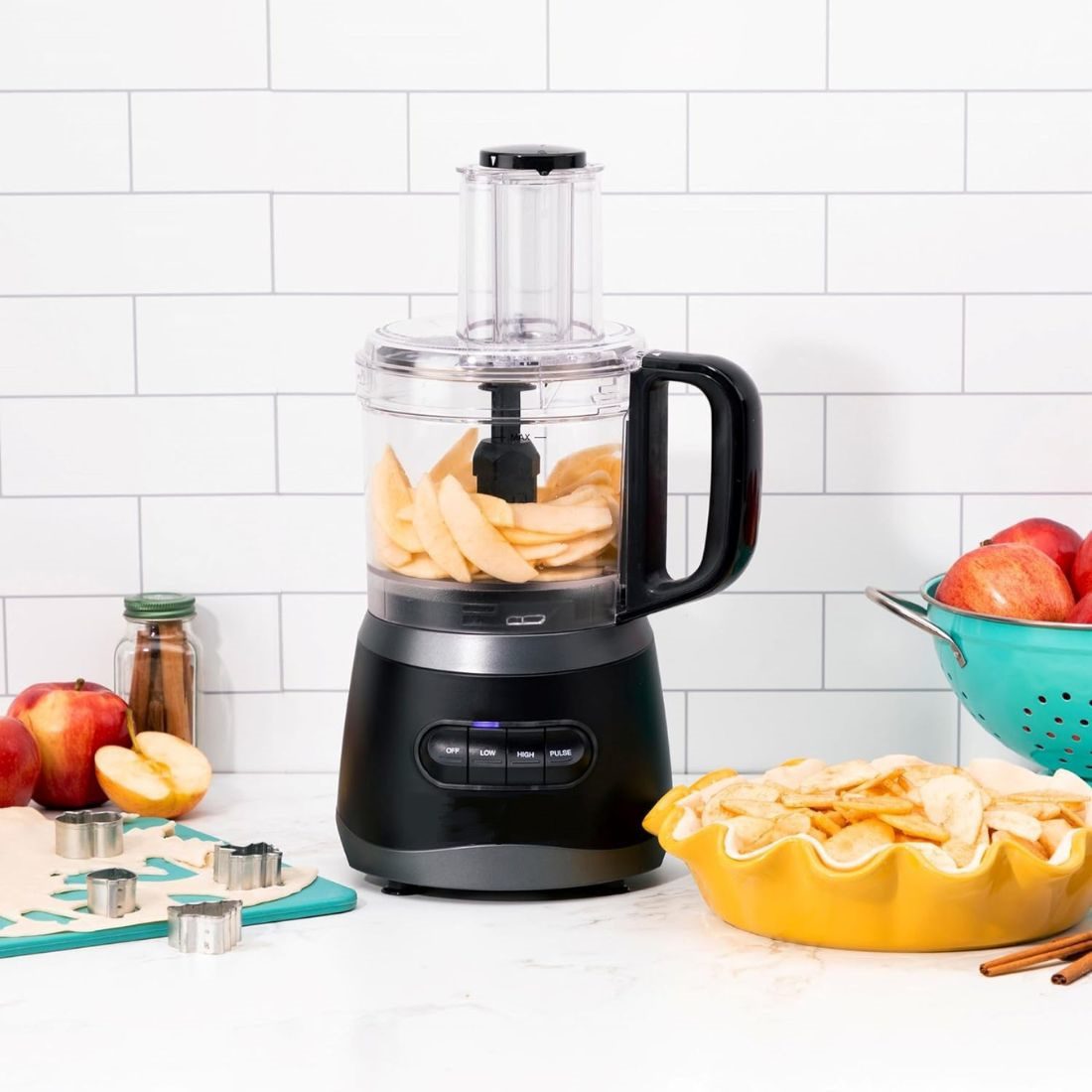
Mandolines
Mandolines are specialized kitchen knives that can create uniform slices of various thicknesses. Their sharp blades are perfect for making julienned carrots, zucchini ribbons, and crinkle-cut potatoes. They are also a good option for slicing herbs and vegetables for garnishes and salads.
Generally, one consists of a handle, a blade assembly, and a base. The user places the food onto the blade assembly and guides it through the blades to create the desired slices.
These are versatile tools for creating uniform slices of various thicknesses. They work particularly well for making julienned carrots, zucchini ribbons, and crinkle-cut potatoes. Their sharp blades also make them useful for slicing herbs and vegetables for garnishes and salads, as well as making decorative veggie chips.
Pros:
- Create uniform slices of various thicknesses
- Perfect for making julienned carrots, zucchini ribbons, and crinkle-cut potatoes
- Good option for slicing herbs and vegetables for garnishes and salads
- Can be used to create decorative veggie chips
Cons:
- Can be dangerous if not used properly
- Requires clean up
Best Usage:
- Making julienned carrots, zucchini ribbons, and crinkle-cut potatoes
- Slicing herbs and vegetables for garnishes and salads
- Creating decorative veggie chips
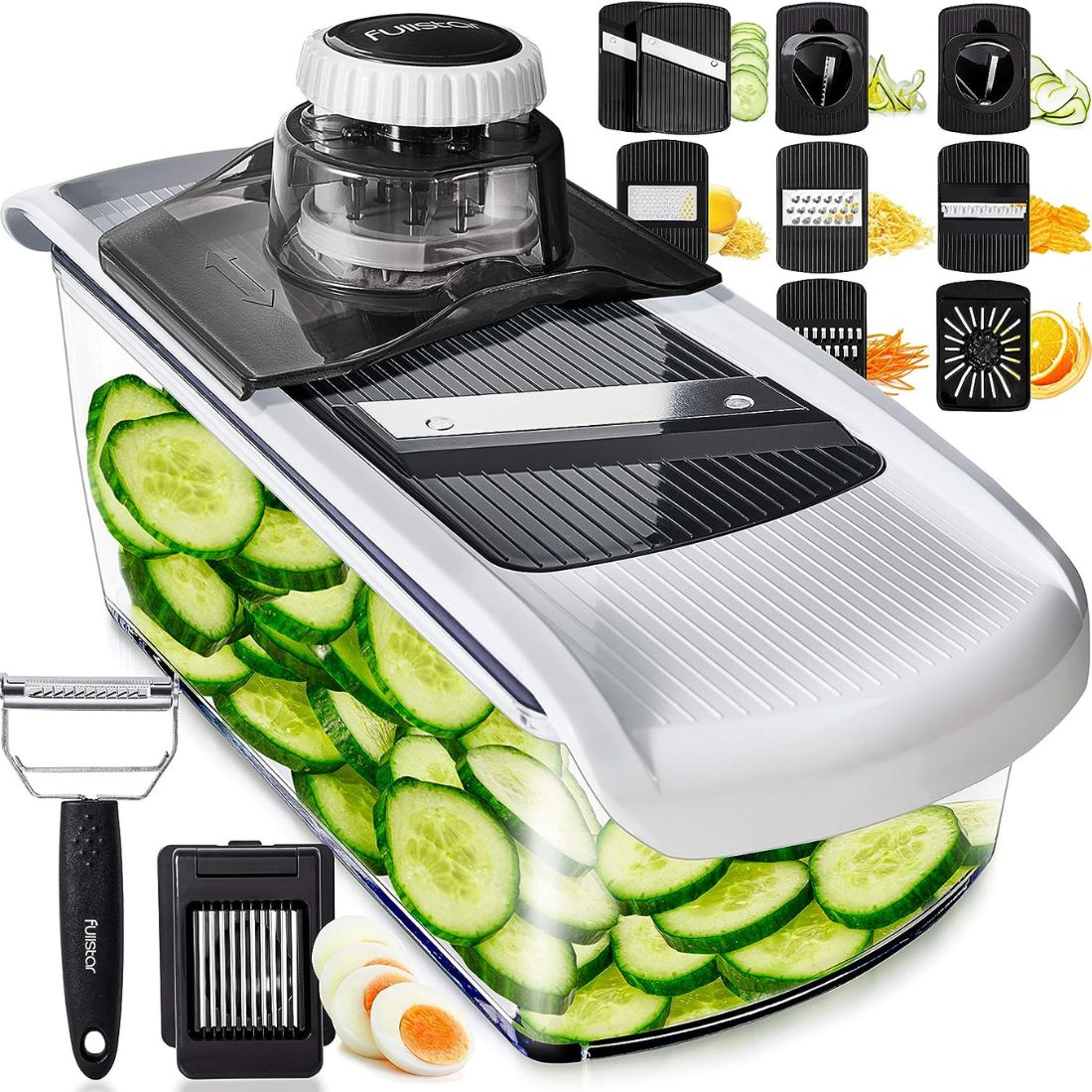
Hand-Operated Ricers
Such ricers are essential tools for achieving the perfect rice consistency. They separate the rice grains from their bran, resulting in fluffy, evenly cooked rice. Also, they are a simple, affordable, and portable option, making them a great choice for home cooks on the go.
Hand-operated ricers typically consist of a handle, a hopper, and a pressing plate.
The user puts cooked rice in the hopper and pushes down the handle to force rice through the pressing plate to separate grains from bran.
Those are ideal for achieving fluffy, evenly cooked rice. Also, these are a good option for creating rice flour for gluten-free baking.
Pros:
- Affordable
- Easy to use
- Portable
- Can separate rice grains from their bran
- Cook fluffy, evenly cooked rice
- Create rice flour for gluten-free baking
Cons:
- Can be time-consuming for large batches
- Requires manual effort
Best Usage:
- Separating rice grains from their bran
- Cooking fluffy, evenly cooked rice
- Creating rice flour for gluten-free baking
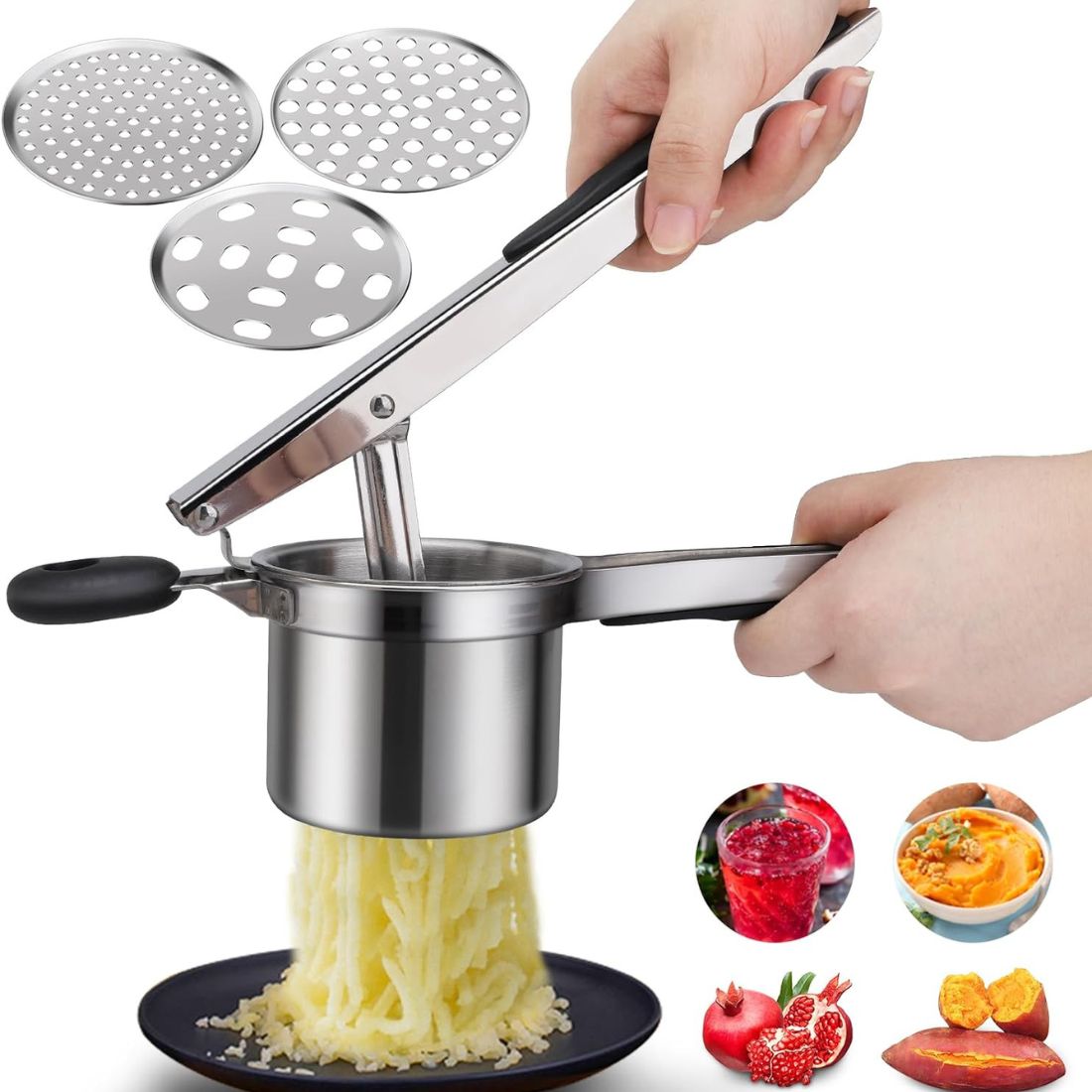
You may also check: 7 Best Salad Choppers Reviews
Hand-Held Salad Slicers
These are small, portable tools that make slicing vegetables and fruits a breeze. Their sharp blades are ideal for creating thin, julienned, or crinkle-cut slices. Besides, these are a convenient and affordable option for everyday use, making them a great choice for on-the-go chefs.
Hand-held salad slicers typically consist of a handle, a blade assembly, and a protective cover. The user places the food onto the blade assembly and guides it through the blades to create the desired slices.
These are ideal for slicing vegetables and fruits into delicate pieces for salads, sandwiches, and wraps. They are also a good option for creating decorative garnishes for dishes.
Pros:
- Portable
- Easy to use
- Convenient
- Affordable
- Sharp blades are ideal for creating thin, julienned, or crinkle-cut slices
Cons:
- Can be difficult to control
- Smaller capacity than other slicers
Best Usage:
- Slicing vegetables and fruits for salads, sandwiches, and wraps
- Creating decorative garnishes for dishes
